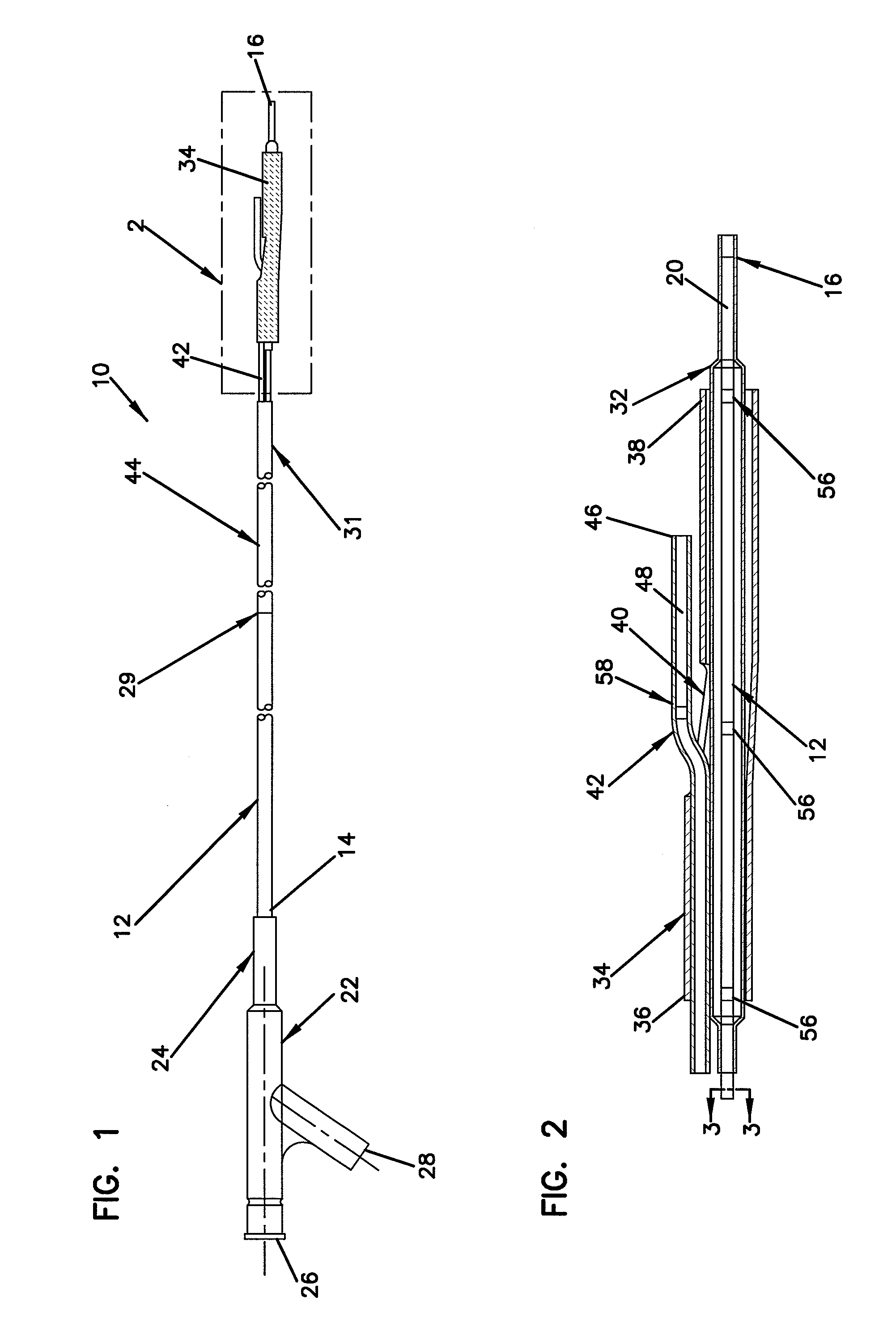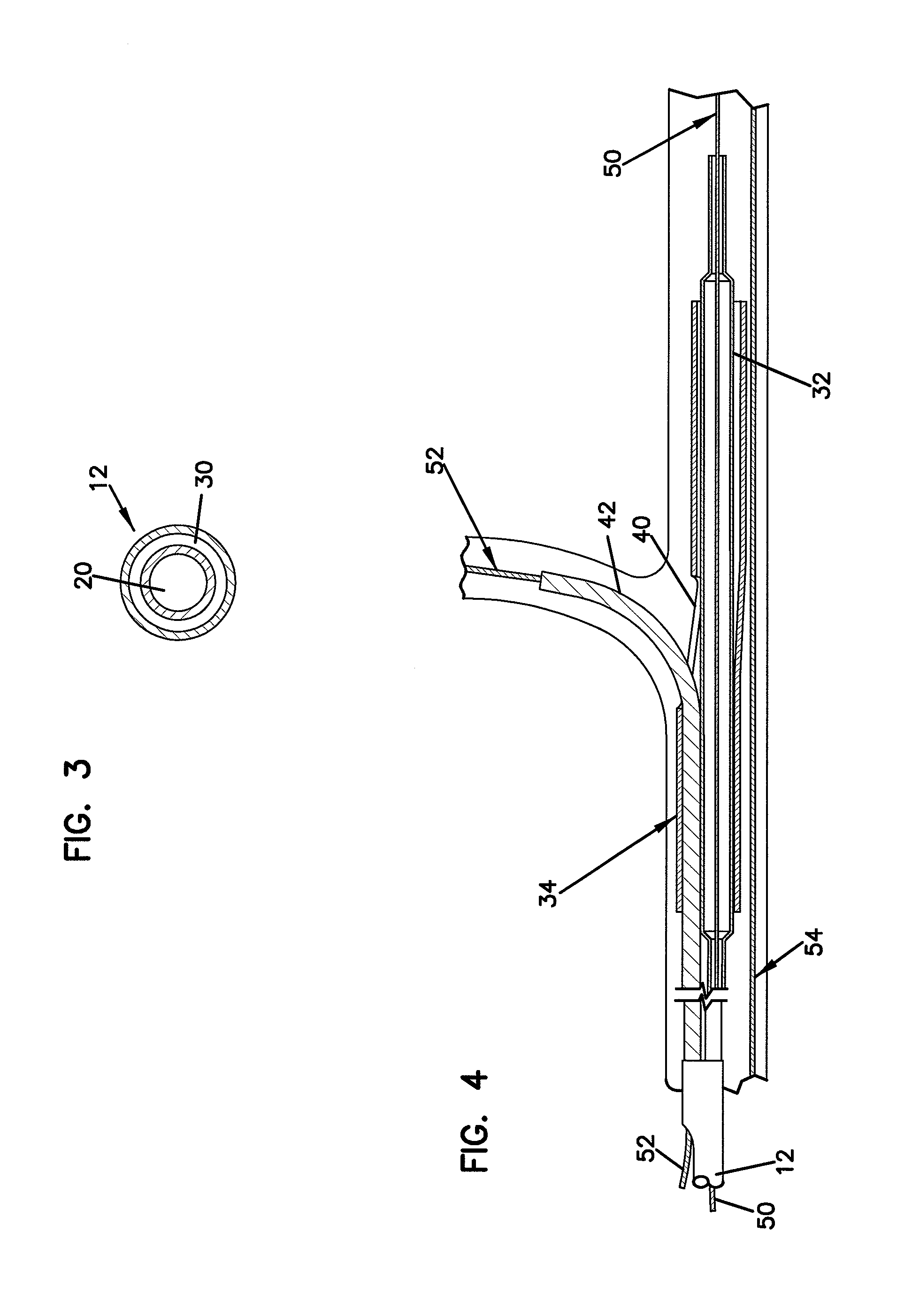Short sleeve stent delivery catheter and methods
a stent and short sleeve technology, applied in the field of short sleeve stent delivery catheter and methods, can solve the problems of wire crossing significantly reduced, facilitate catheter maneuvering within the patient, and achieve the effect of reducing the difficulty of wire crossing
- Summary
- Abstract
- Description
- Claims
- Application Information
AI Technical Summary
Benefits of technology
Problems solved by technology
Method used
Image
Examples
Embodiment Construction
[0031]In one aspect, the invention provides systems and methods for deploying stents at a vessel bifurcation such that a cell in the stent that is specifically designed to function as a branch aperture (referred to herein as a side hole of the stent) is in registry with the ostium of the branch vessel. Further, various techniques are provided for managing the guidewires over which the stents and stent delivery catheters are directed. More specifically, the invention provides techniques to help prevent the crossing of guidewires or to traverse crossed guidewires when introducing catheters used to deploy stents or other devices that require advancement over multiple guidewires, where it is important for the guidewires to be tangle free and parallel with respect to each other. In this way, the catheters may more easily be introduced to the diseased region.
[0032]The invention also provides techniques for reducing the profile of such delivery catheters, and to facilitate the introduction...
PUM
 Login to View More
Login to View More Abstract
Description
Claims
Application Information
 Login to View More
Login to View More - R&D
- Intellectual Property
- Life Sciences
- Materials
- Tech Scout
- Unparalleled Data Quality
- Higher Quality Content
- 60% Fewer Hallucinations
Browse by: Latest US Patents, China's latest patents, Technical Efficacy Thesaurus, Application Domain, Technology Topic, Popular Technical Reports.
© 2025 PatSnap. All rights reserved.Legal|Privacy policy|Modern Slavery Act Transparency Statement|Sitemap|About US| Contact US: help@patsnap.com



